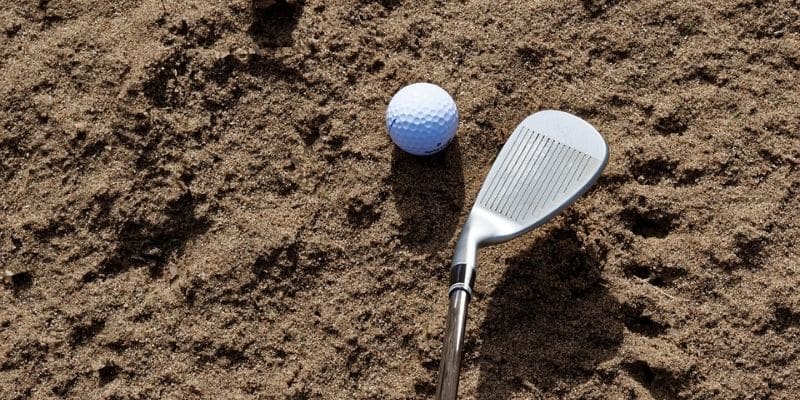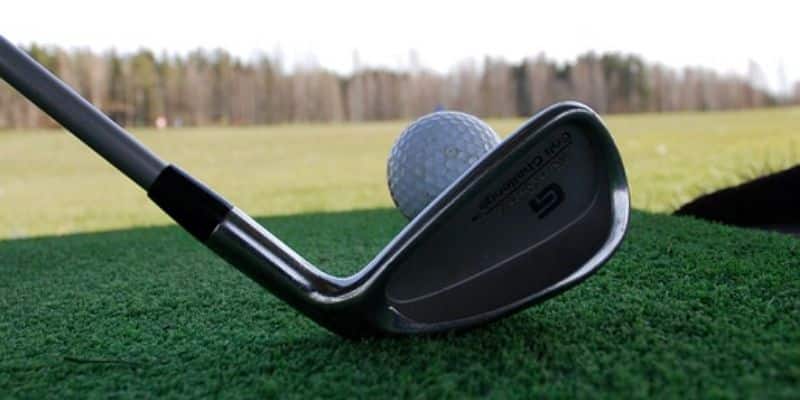The majority of your shots in a typical 18-hole round are going to be 100 yards and into the pin. So, wedges are a very important part of your bag and you should certainly get familiar with all of the types of wedges.
The two types of wedges, the lob, and sand wedge are commonly mistaken for each other by most amateur golfers. There are actually small, but relevant differences between the two.
Is There a Difference Between the Lob and Sand Wedge?
The main difference between a lob wedge and sand wedge is the degree of loft.
A typical lob wedge is anywhere from 58 to 60 degrees according to Golfweek. Even though they are typically in that 58-60 range, there are certainly anomalies. Actually, lob wedges can go up to 64 degrees of loft.
A sand wedge is either 55 or 56 degrees in mostly all cases. Any higher it is going to be a lob wedge, and any lower and it is probably considered a gap or an approach wedge.
Other than the degree of loft, there really are not many differences between a loft wedge and sand wedge in terms of head design. In certain sand wedges, the sole might be angled or have a different shape to be more effective out of a bunker.
Why Do You Need a Sand Wedge?

Like I stated above, having a sand wedge is useful because it might aid you in your bunker play and shots around the green.
With the typical degree of loft being 55 or 56, some golfers actually prefer to chip around the green with a sand wedge because of its loft and ability to put spin on the ball. It is also not lofted so much that you need to have a perfect lie to chip accurately.
A typical distance for a sand wedge is around 75 yards, and PGA Tour professionals can carry it over 100 yards in almost all cases. It is very useful for knockdown shots inside 50 yards if you are comfortable with it.
Why Do You Need a Lob Wedge?

Lob wedges are the highest lofted clubs in the bag, so you can probably guess what kind of shots they are for.
They are perfect for shots that you need to hit over a target and not roll out on the green. Golfers really enjoy lob wedges for shots where you do not have much green to work with and you need to stop the ball on a dime.
The typical distance that people hit a lob wedge is around 30 to 40 yards from experience, and professional golfers can get more in the 60-yard range with a lob wedge.
To perform the patented “flop shot” that Phil Mickelson has shown off, a lob wedge is exactly what you need to perform a very high arching shot. The level of loft that a lob wedge has can really make them tough for amateur golfers to hit a crisp, clean shot.
The Normal Order of the Wedges
The order of loft from the lowest wedge to the highest wedge is as follows:
- Pitching Wedge
- Approach/Gap Wedge
- Sand Wedge
- Lob Wedge
Final Thoughts
There you have it for the main differences between a lob wedge and a sand wedge. Remember to put a heavy emphasis on what wedges you are carrying in your bag and how far each club goes for you.
Your game 100 yards and in is the most important aspect of your game to become an expert in with most cases.
Related Articles
- Gap Wedge vs Approach Wedge- Wha’s The Difference?
- 7 of The Best Golf Wedges
- Do I Need a Sand Wedge? – What Wedges Should You Carry
Nick is the founder of GolfSpan and an avid golfer. He's not quite a pro but has over 15 years of experience playing and coaching golfers worldwide. His mission is to bring the golfing community a better experience when it comes to choosing the right golf gear and finding the right setup for your game.






